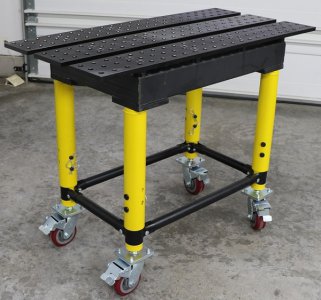- Joined
- May 7, 2014
- Messages
- 776
Hello good People of HM . So I'm into ENCO maddness today. They have the Phase II 8" very well priced and w/the holiday 20% off run. The Tailstock is 50% off regular plus 20% (like 90$) and the backing plate is $50).
Everyone has these threads about baking plates and 3 jaw chucks. . . . I've needed a Rotary table a few times now... but what do I do w/ the chuck on the backing plate?
Any help appreciated on the great work I could do with this nifty trio of additions to the shop ;-)
Everyone has these threads about baking plates and 3 jaw chucks. . . . I've needed a Rotary table a few times now... but what do I do w/ the chuck on the backing plate?
Any help appreciated on the great work I could do with this nifty trio of additions to the shop ;-)

